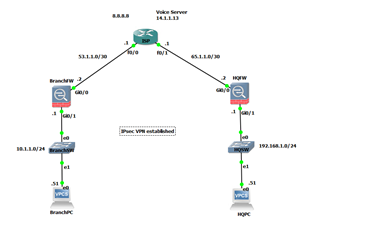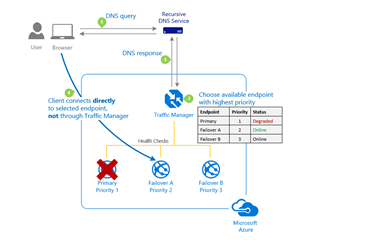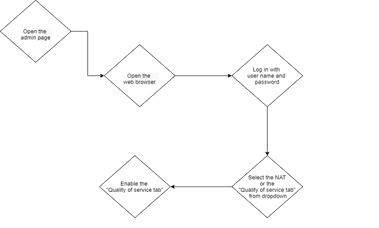Networking Assignment: Quality Of Service For Faster Internet Connection
Question
Task:
Write a 1200-word report on networking assignment addressing the following points:
- How to configure QoS to Get Faster Internet connection?
- how QoS can be configured on networking device to improve your Internet connection
- What parameters need to be configured to enable QoS on the network connecting device?
- How to prioritize between the traffics?
Support your research with samples/figures.
Answer
1. Introduction to Networking Assignment
The flow of data on the Internet or in specific networks i.e., Internet network traffic is not the same completely. The internet speed while sending or receiving documents, downloading or uploading pictures on websites, voice or video streaming, or loading new pages differs from time to time. Regular internet failure is the biggest problem [1]. So, testing with a different modem or router is essential for better speed. Other specifications which have to be checked are scanning for virus, inspection for on-system interference and installed filters, Wi-Fi connection, replacing cables and their assembly, updating firmware and software. The Quality-of-Service characteristic on a router can make a priority of the things of taking into account, so they occur quicker than the other things.
2. Traffic prioritization and QoS
Quality of service technologies is used to achieve highly prioritized applications and circulate under restricted network volume by delivering distinguished treatment and volume provision to certain flows. Decent Quality of Service standards guarantee for streaming HD videos as downloading of large files are simultaneously occurred.
QoS control is useful to overcome difficult circumstances by prioritizing significant traffic. But, for IoT services, finding important traffic is not easy sometime. An architecture of the network regulator is projected here that gives an estimation and makes priority of important traffic under that condition [2]. The regulator under a planned architecture delivers three interfaces to enquire the parties, IoT device, service provider, and user, for involvement about its data. Then, the regulator routinely gives an estimation of the important traffic in accordance with the input and puts on the assessed approach to the network.

Photo Credit: tayam-infra.net
Routers make priority of network traffics in accordance with QoS information and can dominate the default QoS. QoS differs by the superior switch with superior network application layer. Uncontrolled switches do not practice or alter QoS and the traffic goes unchanged. Some switches permit locating QoS by porting to a regular line.
On a regular network, the router is analogous to the condition of incoming services assigning to the available bandwidth. There are plenty of diverse routers out there with diverse firmware and abilities [3]. Several routers have a Quality of Service option that is more unsophisticated for permitting order the network circulation from one system over another [4]. The priority of choosing services varies from person to person almost every single feature of the method.

Photo Credit: docs.microsoft.com
2.1 Figures to Configure Quality of service on networking device
When Quality of service setup objectives is established, it can run accurately. It is normally directed to use the most unsophisticated Quality of service structure because every single Quality of service system request for the quantity of uploading and downloading speed that is required to format the restrictions on the quantity of bandwidth every operator of that system and the facilities associated to the networking device can be using.
To enable Quality of services in the router the operator has to open the administrative page initially [4]. To accomplish the command is to connect a web browser and write the location which is common “192.168.0.1” or “10.0.0.1”. The location is according to the command on the user-manual. After this stage, the operator has to login with the right “user name” and “password”. These documents are stated in the manual too if not modified previously.
The next stage is selecting the network address translation or the “Quality of service tab” from the dropdown and selecting the “Quality of service tab” and enabling the “next tab” for starting the “Quality of service tab”.

Configuration of QoS on networking device
2.2 Parameters
The elementary parameters which are required to be constructed for enabling Quality of service in the network linking device originally gives the distributed link software operators a mode of stipulating their requirements [5]. The QoS parameters are Cell Damage Rate, Cell Interruption Difference, Cell Transmission Interruption, Cell Fault Proportion, Cell Mis-addition Proportion etcetera. Usually, the parameters are subdivided into 2 sets according to the standards that are regulated in 2 modes –
- The “QoS parameters” which are transferred on each linking basis on link establishing time.
- The “QoS parameters” is not transferred while the link is being established.
Usually, the standards are resulted or acknowledged with other or organizational methods. The parameters which are straight linked and can be transferred at the time of the connection setup are called “throughput”, transition interruption, “priority” and “protection”.
The “QoS parameters” for “throughput” and transition interruption are transferred endways between the 2 distributed link software operators and the Distributed Link Software providers. The “Quality Of Service parameters” for precedence and safety are transferred locally by individual Distributed Link Software operator with the Distributed Link Software providers [6]. The “QoS parameters” that cannot be transferred are remaining fault rate and flexibility. Actions for “Quality Of Service Negotiation and Selection” define the guidelines for “Quality Of Service negotiation”.
When the link is set up, the fixed “Quality Of Service values” are not retransferred at any place. There is no assurance by Distributed Link Software providers that the unique “QoS values” will be sustained, and the Distributed Link Software operators are not up-to-date if Quality Of Service modifies [7]. The Distributed Link Software providers also have to only store the “Quality Of Service values” designated at linking setup for return in the answer for non-linked method and Recognized non-linked method Facility.
3. Conclusion
The rising use of internet application such as streaming video, online gaming requires different flow of powder. The treatment to provide such power can be treated differently. The quality of service of the internet is still a broad research topic. The testing parameters are scanning for virus, inspection for on-system interference and installed filters, Wi-Fi connection, replacing cables and their assembly, updating firmware and software. The Quality Of Service feature on a router prioritize the considering thing for operating it more quickly. Quality of Service apparatus is extremely beneficial for transporting huge capacity of local traffic. Routers organize network traffic following Quality of service data-guided and can dominate the default Quality of Service for certain facilities.
4. Bibliography
A. A. Simiscuka, M. Bezbradica, and G.-M. Muntean, “Performance analysis of the quality of service-aware networking scheme for smart internet of things gateways,” in 2017 13th International Wireless Communications and Mobile Computing Conference (IWCMC), 2017, pp. 1370–1374.
D. Kotani, “An Architecture of a Network Controller for QoS Management in Home Networks with Lots of IoTDevices and Services,” 2019 16th IEEE Annu. Consum. Commun. Netw. Conf. CCNC 2019, 2019, doi: 10.1109/CCNC.2019.8651866.
A. Montazerolghaem and M. H. Yaghmaee, “Load-balanced and QoS-aware Software-defined Internet of Things,” IEEE Internet Things J., vol. 7, no. 4, pp. 3323–3337, 2020.
T. A. Q. Pham, Y. Hadjadj-Aoul, and A. Outtagarts, “Deep reinforcement learning based QoS-aware routing in knowledge-defined networking,” in International Conference on Heterogeneous Networking for Quality, Reliability, Security and Robustness, 2018, pp. 14–26.
A. Kerrouche, M. R. Senouci, A. Mellouk, and T. Abreu, “AC-QoS-FS: Ant colony based QoS-aware forwarding strategy for routing in Named Data Networking,” in 2017 IEEE International Conference on Communications (ICC), 2017, pp. 1–6.
R. Hou, Y. Chang, and L. Yang, “Multi-constrained QoS routing based on PSO for named data networking,” IET Commun., vol. 11, no. 8, pp. 1251–1255, 2017.
F. Li, J. Cao, X. Wang, and Y. Sun, “A QoS guaranteed technique for cloud applications based on software defined networking,” IEEE access, vol. 5, pp. 21229–21241, 2017.












